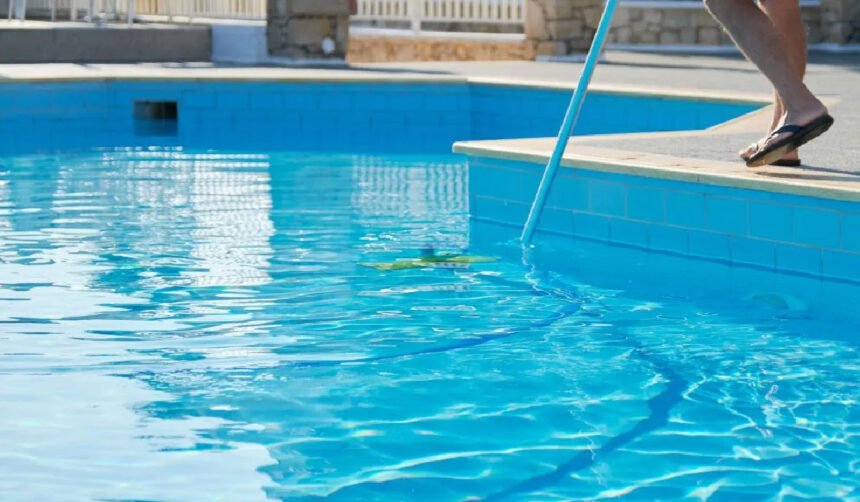A well-maintained pool can serve as the centerpiece of any outdoor space—a place to unwind, entertain guests, or keep the family active. It’s not just a luxury; it’s an investment in lifestyle and property value. But like any feature of the home, a swimming pool requires consistent care to remain in optimal condition. Over time, even the best-built pools will show signs of wear and tear. That’s where pool repair becomes essential.
From minor cosmetic fixes to significant structural problems, pool repairs are not something homeowners can afford to overlook. Ignoring small issues often leads to larger, more expensive damage. Whether it’s a leaking pump, cracked tiles, or a malfunctioning heater, identifying and addressing pool issues early is key to keeping everything running smoothly and safely.
This article will explore the most common signs of pool damage, the different types of pool repairs, what the repair process typically involves, and why hiring a qualified professional is often the best route to long-lasting solutions.
Why Pool Repairs Matter
Pools are exposed to a wide range of environmental factors—sunlight, temperature changes, chemicals, and constant water pressure. Over time, these conditions can compromise the structure and functionality of even the most well-constructed pools. Regular maintenance is important, but it won’t prevent every issue.
Neglecting necessary repairs can lead to:
- Increased water bills from leaks
- Damaged equipment leading to system failure
- Algae growth and water contamination
- Electrical hazards
- Foundation issues around the pool deck
The longer you wait, the more likely a minor problem will turn into a major one.
Common Pool Issues That Require Repair
Understanding what can go wrong is the first step to prevention and quick action. Below are some of the most common pool problems homeowners may encounter:
1. Leaks and Cracks
Even a small leak can waste thousands of gallons of water over time and cause underground erosion. Leaks often develop in:
- Pool walls or floor
- Plumbing lines
- Skimmer or return lines
- Fittings and lights
Cracks can be superficial or structural. The latter is more serious and may require professional resurfacing or patching.
2. Surface Damage
Pool surfaces, especially in concrete or gunite pools, may develop rough patches, chips, or stains. Over time, the plaster can wear thin, making the surface abrasive and unsafe.
3. Broken Tiles or Coping
Tiles around the waterline or the coping that borders the pool edge can become loose or fall off. This is often due to ground movement, freeze-thaw cycles, or water damage beneath the surface.
4. Equipment Malfunctions
Your pool’s filtration system, heater, chlorinator, and pumps are the heart of water circulation and cleanliness. Signs of trouble include:
- Strange noises from the pump
- Decreased water pressure
- Inconsistent water temperature
- Cloudy water despite normal chemical levels
5. Plumbing Problems
Underground leaks, clogged pipes, or corroded fittings can cause circulation issues. Diagnosing these problems often requires specialized leak detection tools.
6. Lighting Issues
Faulty pool lighting can be both a safety issue and an aesthetic one. Sometimes it’s just a burnt-out bulb; other times, wiring or water intrusion is the problem.
The Pool Repair Process
No two pool repairs are exactly alike, but most follow a systematic approach to identify the issue, determine the scope, and restore functionality. Here’s how most professional repairs are handled:
Step 1: Inspection and Diagnosis
The first step is a thorough inspection of the pool, equipment, and plumbing. Professionals use tools like pressure testing, dye tests, and sonar leak detection to pinpoint hidden problems.
Step 2: Cost Estimate and Scope
After diagnosing the issue, a detailed estimate is provided. This outlines the labor, materials, time required, and any optional upgrades that might be recommended during the repair.
Step 3: Scheduling and Preparation
Depending on the complexity, repairs may require draining the pool partially or fully. Safety measures are also taken to protect nearby landscaping, structures, and power systems.
Step 4: Repair Execution
This varies depending on the issue:
- For leaks: Epoxy, putty, or new fittings are applied
- For structural cracks: Patching or resurfacing with plaster or other materials
- For equipment: Pumps and filters may be repaired or replaced
- For plumbing: Excavation may be needed to reach buried lines
Step 5: Testing and Final Check
Once repairs are complete, the system is refilled, balanced chemically, and tested for full functionality. Professionals ensure no new leaks exist, and all equipment operates as expected.
DIY vs. Professional Pool Repair
While it’s tempting to fix some issues on your own—especially cosmetic ones—there are several reasons why hiring a trained professional is usually the better choice.
Professionals offer:
- Specialized tools and diagnostic equipment
- Knowledge of building codes and pool safety standards
- Access to high-quality materials and parts
- Warranty on labor and repairs
- Faster and more efficient service
Attempting complex repairs without proper experience can lead to bigger problems, including damaging your pool further or voiding warranties.
That said, small tasks like replacing a light bulb, resetting a tripped breaker, or clearing a clogged skimmer basket are perfectly manageable for most pool owners.
Signs You Need Immediate Pool Repair
Sometimes pool damage is subtle, but in many cases, the signs are obvious and require urgent attention. Here are red flags that should never be ignored:
- Unexplained drop in water level
- Cracks in pool floor or walls
- Persistent cloudy water despite chemical balancing
- Loud noises or grinding from the pump
- Electrical issues (e.g., flickering lights, breaker trips)
- Wet spots or soft ground around the pool
- Algae growth that keeps returning
Prompt action not only prevents escalation but also saves money in the long run.
Seasonal Pool Repairs
Pools undergo different types of stress depending on the season. Being aware of these helps you plan and prioritize maintenance and repair needs throughout the year.
Spring
- Reopening issues like cracked fittings or damaged tiles
- Equipment checkups before swimming season begins
Summer
- Increased wear from usage
- Keeping filters and circulation systems running smoothly
Fall
- Cleaning and prepping before closing
- Addressing any damage before winter sets in
Winter
- Monitoring for freeze damage (especially in colder climates)
- Checking for leaks or shifting due to frost heave
Seasonal awareness helps catch issues before they become serious, reducing the need for emergency pool repair.
How to Prevent Future Repairs
Preventative care is just as important as responsive repairs. Following a consistent maintenance routine can help extend the life of your pool and reduce the need for costly fixes.
Tips to reduce the need for repairs:
- Maintain proper water chemistry (pH, chlorine, calcium hardness, etc.)
- Run the filter system regularly (typically 8–12 hours a day in season)
- Inspect pool surfaces and equipment weekly
- Clean out debris daily to reduce strain on filters
- Schedule professional inspections annually
When issues do arise, addressing them early makes all the difference. Routine checkups and timely repairs can extend your pool’s lifespan and keep it safe for everyone.
Final Thoughts: Restoring Peace of Mind
A swimming pool is more than just a feature—it’s a place of relaxation, recreation, and family connection. But like any system, it requires attention and care to function as intended. Whether you’re dealing with a hairline crack, equipment malfunction, or water quality issue, professional pool repair services offer the expertise and efficiency to get your pool back to its best condition.
Addressing problems early not only ensures a safer swim environment but also protects your investment. With proper repair and maintenance, your pool can continue to bring joy and value to your home for many years to come.
For More Information, Visit Dotmagazine









